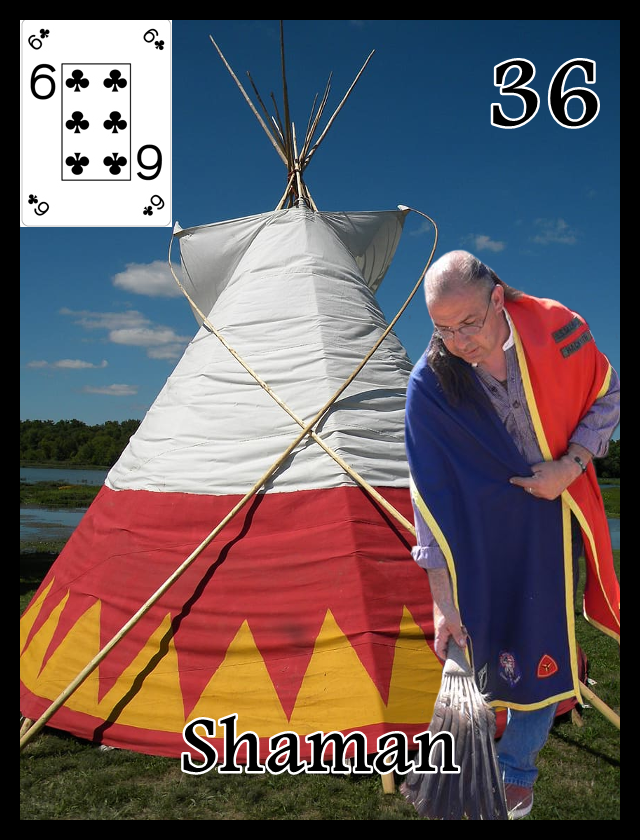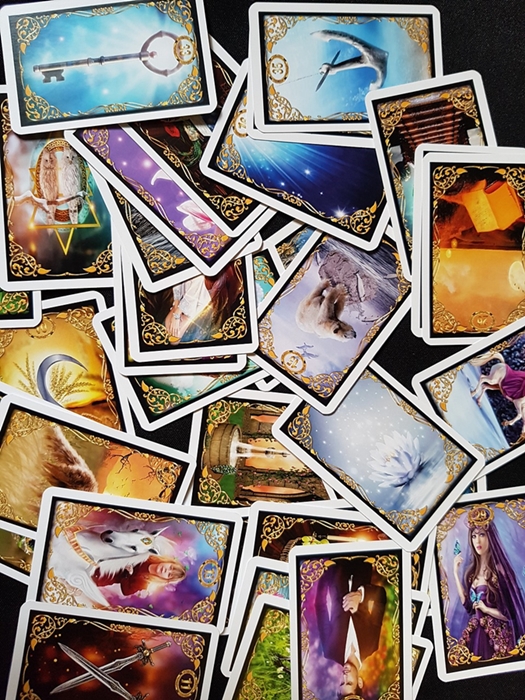I'm taking you along with me as I create a new card deck for myself. I will create it with an American Indian theme as I did once before. What is Lenormand? - check out my previous article.
Card 36 - Shaman
This was another one which caused me difficulty because the cross as we see it in Euro-American culture (especially as part of the Christian culture) has no direct translation into traditional American Indian cultures.
In Lenormand, the Cross is seen as a negative card, but not death. Yet, Native legend tends to focus more positively in general. There are symbols that represent death itself, but never just suffering in general - the type that makes you turn to a deity.
Finally, after a couple of weeks of thinking about it, I realized that the Shaman represents the same connection between human and god that the cross represents. And we tend to turn to the divine in times of crisis.
When we think of the Cross, we tend to think of: * fate, religion, burden (the cross we bear) * difficulties, trials, suffering * mistakes, misfortune and illness * warning that something in your life needs to be eliminated
My feeling is that the Shaman is about as close to anything I can find to represent this card both genuinely and authentically.
For more information on what this card means, check out Lenormand1's interpretation - for combining the Shaman with any other card, check out the site: Learn Lenormand
- For my new card, For my new card, I hit Google Images search, looking for something with CC0 (Creative Commons 0) licensing meaning that I don't always have to remember to credit someone - essential if I were to start doing paid readings with these cards.
I also had to find out which traditional playing card is associated with this card. So, here is my result:

(Base image source: Tipi from PxFuel and the Shaman from Defense.gov.)
It was very difficult to find someone who was more of a shaman than a medicine man or woman. Obviously, medicine is part of their job, but I see the shaman as much, much more than that. They serve as a connection between the human and the divine. They cleanse, smudge (as this man is doing), offer prayers, etc.
Of course, as often happens, the background was unsuitable, showing a modern tent. I decided that I wanted something more traditionally native, so I found another tipi to use. Although this particular shaman is probably of more a Southwestern tribal tradition, the practice carried throughout the Americas. This makes the contrast in this image into a harmonizing factor rather than an eye-sore.
I really like the result.
With this card, this Lenormand deck is complete. It is my intention to offer a weekly reading to someone who comments on this post with a general question they need answering. (Not yes/no, please.) Then, I can show you how I read Lenormand.
Note: Readings are entertainment only (legally). You are in charge of your own destiny. Order your personal reading at Fiverr.
Previous cards: 1 Rider; 2 Dreamcatcher; 3 Canoe; 4 Tipi; 5 Medicine Wheel; 6 Clouds; 7 Poison Ivy; 8 Burial; 9 Flowers; 10 Tomahawk; 11 Rattlesnake; 12 Hummingbird; 13 Child; 14 Coyote; 15 Bear; 16 Stars; 17 Butterfly; 18 Dog; 19 Pueblo; 20 Pow wow; 21 Cliff; 22 Crow; 23 Mosquito; 24 Swans; 25 Unity; 26 Elder; 27 Talking Stick ; 28 Man ; 29 Woman ; 30 Flute ; 31 Sun ; 32 Moon ; 33 Feathers ; 34 Fish ; 35 Cedar ; 36 Cross .
Lori Svensen author/designer at A'mara Books photographer/graphic artist for Viking Visual (Buy my work at RedBubble) verified author on Goodreads find me on Twitter


 (
(